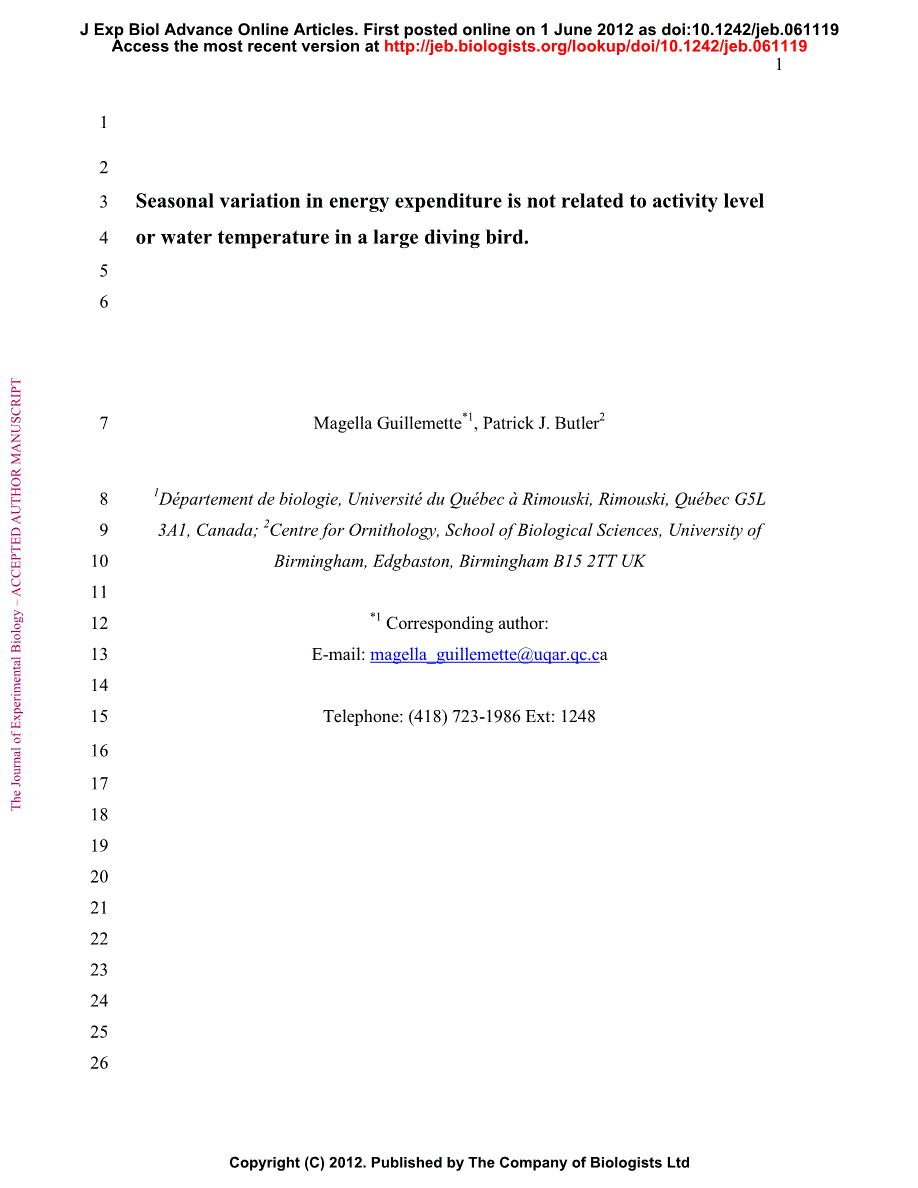Summary
There is considerable interest in understanding how the energy budget of an endotherm is modulated from a physiological and ecological point of view. In this paper, we used the heart rate method and daily heart rate (DHR), as a proxy of DEE across seasons, to test the effect of locomotion activity and water temperature on the energy budget of a large diving bird. DHR was monitored continuously in common eiders (Somateria mollissima) during seven months together with measures of time spent flying and time spent feeding. DHR varied substantially during the recording period with numerous increases and decreases that occurred across seasons although we could not find any relationship between DHR and the time spent active (feeding and flying). However, inactive heart rate (IHR) decreased as locomotion activity increases suggesting common eiders were using behavioural compensation when under a high work load. We were also unable to detect a negative relationship between water temperature and resting heart rate, a proxy of resting metabolic rate. This was unexpected based on the assumption that high thermoregulation costs would be associated with cold waters. We showed that high level of energy expenditure coincided with feather moult and warm waters, which suggest that the observed variable pattern of seasonal DEE was driven by feather growth and possibly by other productive costs. Nevertheless, our results indicate that behavioural compensation and possibly the timing of moult may be used as mechanisms to reduce seasonal variation in energy expenditure.








